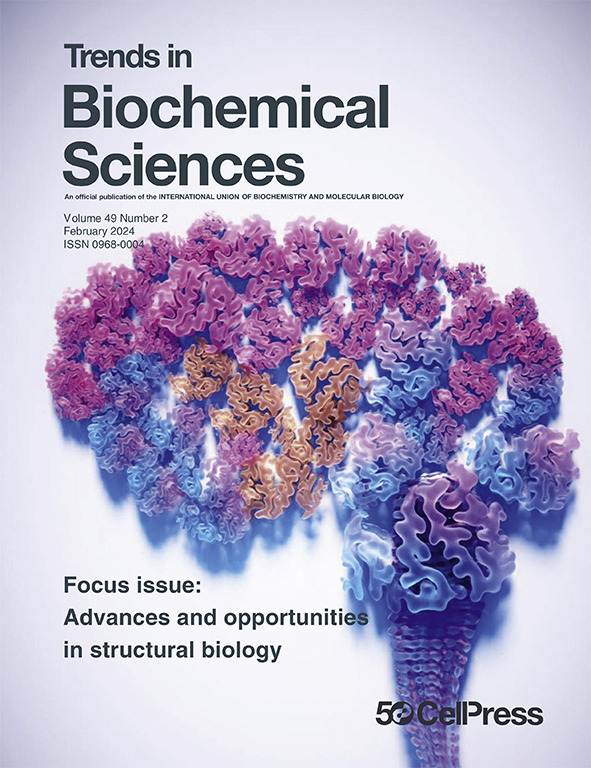真核生物转录因子动力学和转录调控的再思考。
IF 11.6
1区 生物学
Q1 BIOCHEMISTRY & MOLECULAR BIOLOGY
引用次数: 0
摘要
转录因子通过与顺式调控元件中的特定DNA基序结合来控制基因表达。协同性被认为可以确保TF的结合特异性。最近的研究表明,至少在酵母中,协同作用的作用可能被过分强调了。因此,协同作用——结合在多个DNA位点上的tf集体募集转录机制——成为实现转录反应特异性的更重要机制。此外,我认为相分离核凝析物中tf的浓度及其共价修饰在通过互补机制增强转录反应方面发挥着未被充分认识但至关重要的作用。一个整合了协同作用、协同作用、翻译后修饰和相分离的模型为解释真核生物中动态的、特定环境的转录反应提供了一个全面的框架。本文章由计算机程序翻译,如有差异,请以英文原文为准。
Rethinking transcription factor dynamics and transcription regulation in eukaryotes
Transcription factors (TFs) control gene expression by binding to specific DNA motifs in cis-regulatory elements. Cooperativity has been thought to ensure TF binding specificity. Recent research suggests that, at least in yeast, the role of cooperativity has probably been overemphasized. Consequently, synergy – the collective recruitment of the transcriptional machinery by TFs bound at multiple DNA sites – emerges as a more significant mechanism for achieving the specificity of the transcriptional response. Furthermore, I argue that the concentration of TFs within phase-separated nuclear condensates and their covalent modifications play an underappreciated but crucial role in sharpening transcriptional responses through complementary mechanisms. A model integrating cooperativity, synergy, post-translational modifications, and phase separation provides a comprehensive framework to explain dynamic, context-specific transcriptional responses in eukaryotes.
求助全文
通过发布文献求助,成功后即可免费获取论文全文。
去求助
来源期刊

Trends in Biochemical Sciences
生物-生化与分子生物学
CiteScore
22.90
自引率
0.70%
发文量
148
审稿时长
6-12 weeks
期刊介绍:
For over 40 years, Trends in Biochemical Sciences (TIBS) has been a leading publication keeping readers informed about recent advances in all areas of biochemistry and molecular biology. Through monthly, peer-reviewed issues, TIBS covers a wide range of topics, from traditional subjects like protein structure and function to emerging areas in signaling and metabolism. Articles are curated by the Editor and authored by top researchers in their fields, with a focus on moving beyond simple literature summaries to providing novel insights and perspectives. Each issue primarily features concise and timely Reviews and Opinions, supplemented by shorter articles including Spotlights, Forums, and Technology of the Month, as well as impactful pieces like Science & Society and Scientific Life articles.
 求助内容:
求助内容: 应助结果提醒方式:
应助结果提醒方式:


